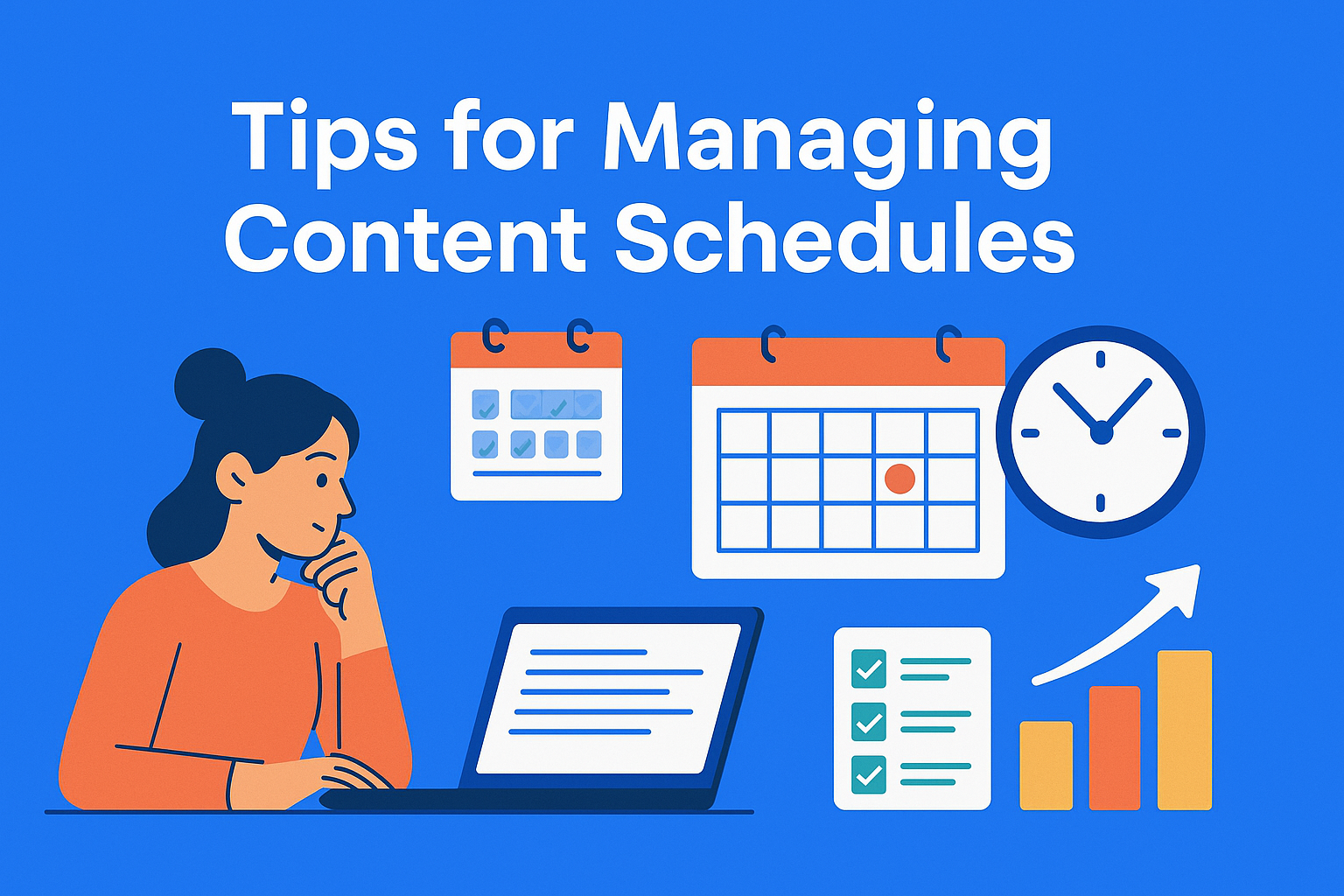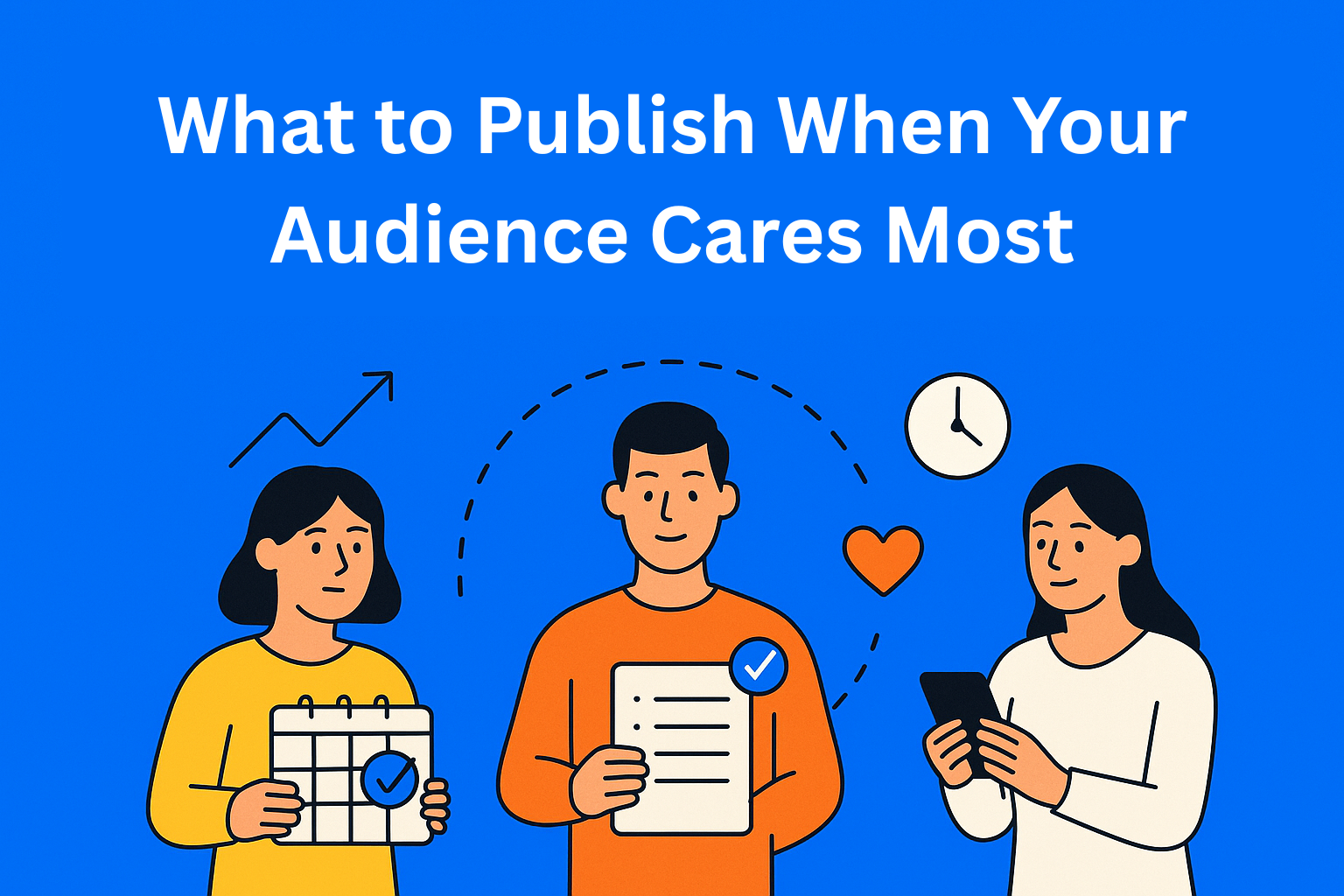Never Miss a Deadline Again: Best Tips for Managing Content Schedules
Staring at deadlines like a deer in headlights? Learn how to master your content schedule with real-life tips, zero corporate fluff, and just enough structure to keep your brain (and calendar) from imploding. Your content chaos ends here.

If it ever happened to you that you’re staring at a blank Google Doc at 3 AM, drinking your third coffee and trying to come up with an intro for a blog that has to be published in a few hours... then you’re definitely in the right place. Trust me, I’ve been there. More times than I care to admit.
In this text, I’ll walk you through tips for managing your content schedule - no boring corporate phrases, I promise! This guide is for anyone who ever said: "Yeah, I got this, no problem" and ended up panicking because they didn’t have a content plan. Whether you’re a content manager, freelancer, copywriter or anyone juggling posts, welcome. It’ll be fun. And useful. Might even save you a deadline.
Key Takeaways
- Set realistic goals and deadlines - Use SMART goals to avoid burnout and missed publishing windows.
- Use smart tools to stay on track - Whether it’s Trello, Notion, or EasyContent, pick one and stick to it.
- Content calendar = your best friend - Keep all formats, channels, owners, and statuses visible at a glance.
- Batch your work - Group similar tasks together to increase efficiency and content consistency.
- Leave room for the unexpected - Buffer days and backup content save you when chaos strikes.
- Review regularly - Weekly and monthly check-ins improve output and guide content strategy over time.
- Use EasyContent (or similar) - Centralized workflows, collaboration, and publishing = fewer headaches.
- Start with one change - Even one small adjustment can shift your schedule from chaos to clarity.
1. Goals and deadlines - but make them realistic, not science fiction
A plan without goals is like when you start doing something, but you don’t really know what or why - so you wander around, go in circles, and wonder where your day went. That’s why it’s important to know what you want to achieve and by when it should be done.
It’s great if you say “I want to write more,” but you should be more specific - tell yourself something like: “I will write two blog posts per week during the next month, focused on SEO for e-commerce.” Now that already sounds like a plan that knows where it’s going.
And when it comes to deadlines - please, be realistic. If you know it takes you two days for research and three more for writing, don’t give yourself one day. That’s not a challenge, that’s failure waiting to happen. Give yourself enough time to do the job properly, without panic and drama.
Work smart, not just fast - and everything will go smoother (and without caffeine at 3 a.m.).
2. Tools are your extended hand (and brain)
Forget sticky notes stuck all over your monitor - this isn’t 2007. Today you need one of those fancy tools that not only remember for you but also nag you if you forget something.
- Trello - if you love cards and dragging them across boards like chess pieces
- Asana - for those who love tasks, deadlines, and tags to exhaustion
- Notion - like you crossed Evernote, Excel, and Word into one
- Google Calendar - for the old school folks, but digital
Honestly? It doesn’t matter which one you use, as long as you use something that makes your life easier.
This is where EasyContent can help - if you need a platform that not only tracks all the steps of content production but also allows collaboration without chaos, there’s your solution. From brief to publish, everything’s in one place.
3. Content calendar - your holy grail
If you don’t have a content calendar, congrats - you’re currently in the organizational wild west. A calendar isn’t a luxury, it’s GPS through the chaos we call content production.
A good calendar includes:
- Title
- Format (blog, video, story, meme...)
- Channel (Instagram, LinkedIn, blog...)
- Publish date
- Who’s doing it
- Status (idea, in progress, ready, published)
Use colors, tags, emojis, whatever - as long as you know what’s going on. If you’re using Notion, create a database with a date view. If you’re a Google Sheets type, make a template. The key is seeing everything at a glance.
And if you want something already set up for content teams, EasyContent jumps in again. We have an excellent content calendar for creating, scheduling, and reviewing content that doesn’t require a master’s in project management, just some common sense.
4. Batching: create more, work less (or at least make it look that way)
Batching is what allows you to watch Netflix on Friday night guilt-free because you know everything is scheduled through next week.
Here’s what a solid batching day looks like:
- Morning: writing blog posts
- Afternoon: making visuals for everything
- Next day: scheduling it all and chilling
Sounds like a plan? That’s because it is. Time saver, energy maximizer, and bonus - your content sounds consistent because you’re making it all in the same mood.
5. Expect the unexpected (because Murphy never sleeps)
You know that feeling when everything’s going perfectly - calendar full of plans, all tasks done and ready... and then the client sends a message at 5:48 PM saying, “Hey, I need this done by yesterday.” Or the copywriter disappears like they fell off the face of the planet. Welcome to the real world of content production.
So keep your wits about you and always have backup content - it doesn’t have to be spectacular, but keep it handy. An old blog that still makes sense, an evergreen infographic, or a quote that always bumps engagement. Don’t stuff your calendar to the brim - that’s like packing a suitcase for vacation and trying to fit in a hairdryer and iron when there’s no space left for a basic t-shirt. No need. Leave some room so you can “zip the suitcase.” Add “buffer days” - a bit of free space for when things don’t go to plan, something breaks in the algorithm, or you can’t reach someone from the team, and you need them urgently.
6. Review: your secret weapon
You know that feeling when you thought something was working, but no one actually cared? Yeah, that means you haven’t done a review.
Here’s how to make sure that doesn't happen:
- Weekly: review what’s been done. No self-blame, be like a coach - constructive.
- Monthly: analytics. How many views, clicks, comments? What did well, what didn’t.
- Adjust. If people don’t react to long posts - shorten them. If they ignore educational videos - add humor.
Here, EasyContent helps again - you can track all phases of content, from the first sketch to publishing, and easily do reviews with the whole team.
Conclusion
Managing a content schedule doesn’t have to be a drama. With a bit of smarts, the right tools, and regular check-ins, you can be that person on the team who always meets deadlines (and even has a meme ready for the end of the meeting).
So, take one tip from this list. Just one. Try it today. And watch how the chaos slowly turns into control.
And the next time someone says “We’ve got a deadline tomorrow” - just smile and show them your calendar.






